For the 2025 school year, there are 2 public high schools serving 335 students in Midfield City School District. This district's average high testing ranking is 2/10, which is in the bottom 50% of public high schools in Alabama.
Public High Schools in Midfield City School District have an average math proficiency score of 10% (versus the Alabama public high school average of 22%), and reading proficiency score of 10% (versus the 37% statewide average).
Public High School in Midfield City School District have a Graduation Rate of 92%, which is more than the Alabama average of 88%.
The school with highest graduation rate is Midfield High School, with 90-94% graduation rate. Read more about public school graduation rate statistics in Alabama or national school graduation rate statistics.
Minority enrollment is 99% of the student body (majority Black), which is more than the Alabama public high school average of 45% (majority Black).
Overview
This School District
This State (AL)
# Schools
4 Schools
524 Schools
# Students
1,033 Students
269,281 Students
# Teachers
49 Teachers
15,139 Teachers
Student : Teacher Ratio
21:1
21:1
District Rank
Midfield City School District, which is ranked within the bottom 50% of all 145 school districts in Alabama (based off of combined math and reading proficiency testing data) for the 2021-2022 school year.
The school district's graduation rate of 90-94% has stayed relatively flat over five school years.
Overall District Rank
#142 out of 145 school districts
(Bottom 50%)
(Bottom 50%)
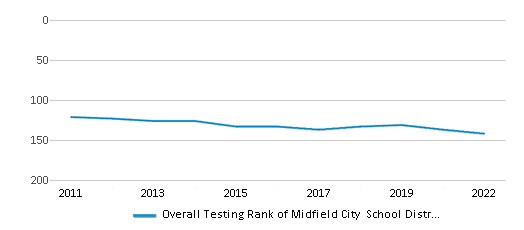
Math Test Scores (% Proficient)
3%
29%
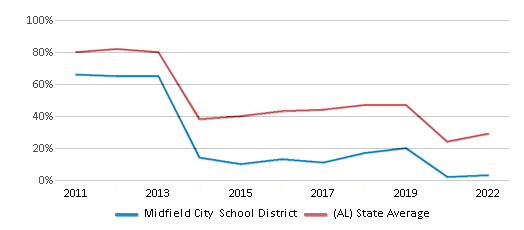
Reading/Language Arts Test Scores (% Proficient)
18%
47%
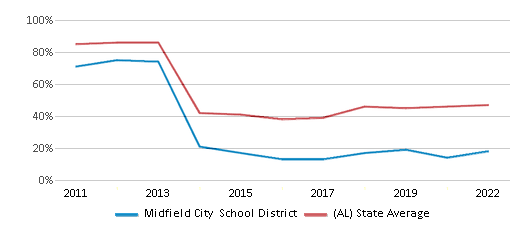
Science Test Scores (% Proficient)
13%
38%
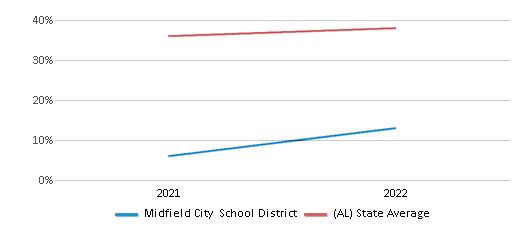
Graduation Rate
90-94%
88%
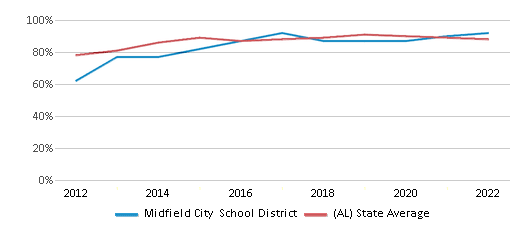
Students by Ethnicity:
Diversity Score
0.19
0.61
# American Indian Students
n/a
3,318 Students
% American Indian Students
n/a
1%
# Asian Students
n/a
3,771 Students
% Asian Students
n/a
1%
# Hispanic Students
89 Students
27,927 Students
% Hispanic Students
9%
10%
# Black Students
925 Students
79,219 Students
% Black Students
89%
30%
# White Students
6 Students
146,785 Students
% White Students
1%
55%
# Hawaiian Students
2 Students
271 Students
% Hawaiian Students
n/a
n/a
# Two or more races Students
11 Students
7,990 Students
% of Two or more races Students
1%
3%
Students by Grade:
# Students in PK Grade:
36
1,653
# Students in K Grade:
67
3,203
# Students in 1st Grade:
84
3,312
# Students in 2nd Grade:
69
3,308
# Students in 3rd Grade:
61
3,300
# Students in 4th Grade:
67
3,240
# Students in 5th Grade:
81
3,663
# Students in 6th Grade:
86
5,852
# Students in 7th Grade:
68
10,681
# Students in 8th Grade:
79
12,552
# Students in 9th Grade:
79
59,097
# Students in 10th Grade:
98
56,985
# Students in 11th Grade:
86
53,180
# Students in 12th Grade:
72
49,255
# Ungraded Students:
-
-
District Revenue and Spending
The revenue/student of $15,406 is higher than the state median of $13,006. The school district revenue/student has grown by 30% over four school years.
The school district's spending/student of $16,030 is higher than the state median of $12,220. The school district spending/student has grown by 43% over four school years.
Total Revenue
$16 MM
$9,671 MM

Spending
$17 MM
$9,086 MM
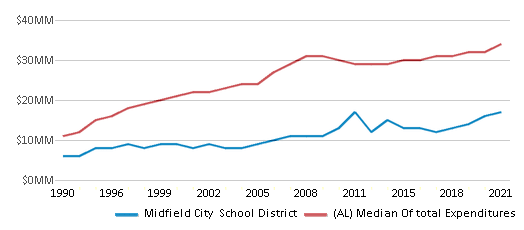
Revenue / Student (19-20)
$15,406
$13,006
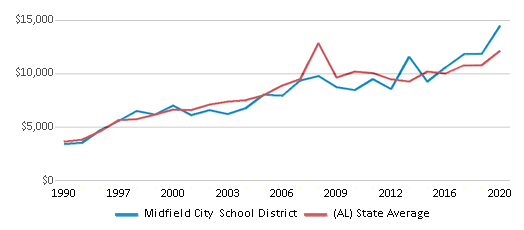
Spending / Student (19-20)
$16,030
$12,220
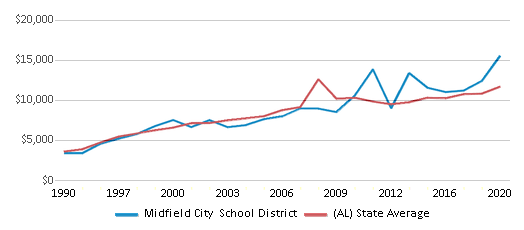
Best Midfield City School District Public High Schools (2025)
School
(Math and Reading Proficiency)
(Math and Reading Proficiency)
Location
Grades
Students
Rank: #11.
Midfield High School
(Math: ≤10% | Reading: ≤10%)
Rank:
Rank:
1/
Bottom 50%10
1600 High School Rd
Birmingham, AL 35228
(205) 923-2834
Birmingham, AL 35228
(205) 923-2834
Grades: 9-12
| 335 students
Rank: n/an/a
Midfield Area Vocational Department
Vocational School
1600 High School Dr
Birmingham, AL 35221
(205) 923-2833
Birmingham, AL 35221
(205) 923-2833
Grades: 9-12
| n/a students
Recent Articles

Sexual Harassment at Age 6: The Tale of a First Grade Suspension
A six-year old in Aurora, Colorado, was suspended after singing an LMFAO song to a little girl in his class and reportedly “shaking his booty.” We look at the case and the sexual harassment problem in public schools today.

How Scaffolding Could Change the Way Your Child Learns
This article explores the concept of instructional scaffolding, a teaching method that enhances learning by breaking down complex tasks into manageable parts. It highlights how scaffolding supports students in developing critical thinking skills and becoming more independent learners. The article discusses the benefits of scaffolding, including improved engagement and reduced anxiety, and provides strategies for its implementation across various educational levels.

February 05, 2025
Understanding the U.S. Department of Education: Structure, Impact, and EvolutionWe explore how the Department of Education shapes American education, from its cabinet-level leadership to its impact on millions of students, written for general audiences seeking clarity on this vital institution.





